Traceability
Traceability is a tracking and identification system that makes it possible to track the origin and destination of cattle. This traceability serves as a reference regarding product origin and quality.
Many countries around the world have already set up or are currently developing livestock identification and traceability systems. These are tools (tattoos, metal rings, electronic markers) that ensure faster and more effective action in a health crisis. This system reduces the impact of a livestock disease, in addition to offering traceability from the farm to the table.
An uncompleted objective
Since 2001, Quebec cattle producers have attempted to meet the identification and traceability requirements. Unfortunately, traceability ends when the animals are slaughtered.
Currently, the rest of Canada is working on the deployment of a system comparable to Quebec’s.
In Canada and Quebec
In Canada, the Canadian Cattle Identification Agency (CCIA) is responsible for enforcing the permanent livestock identification system. Since January 1, 2001, Canadian cattle and bison must have an ear tag before leaving their herd of origin. This tag must be maintained to the point of carcass inspection at the slaughter plant.
In 1999, the Quebec government and the Union des producteurs agricoles (UPA) agreed to establish a permanent identification and traceability system for agricultural products from the farm to the table. Attestra, an independent non-profit organization, was created in September 2001 to administer the system in Quebec.
Since July 1, 2002, every beef and dairy animal in Quebec must have two tags. At the animal’s birth or upon its arrival on Quebec soil, the producer must attach a small visual tag to one of the animal’s ears, displaying a unique number. In the other ear, the producer places a round electronic ring the size of a dollar coin. The tag has an electronic chip bearing the same number as the visual tag. An adapted reader can read this unique number.
Did you know?
Quebec is the first province in Canada where a complete traceability system has been established that requires reporting of all cattle movements, from the farm to the slaughterhouse. Thus, all stakeholders participate actively in the system: producers, auction barns, exhibitions, veterinarians, slaughter plants.
As soon as an animal enters one of these sites, a report is produced and transmitted to Attestra. A complete history of the sites visited by each animal is thus established, from birth to the end of its life?
 Youtube
Youtube Facebook
Facebook
